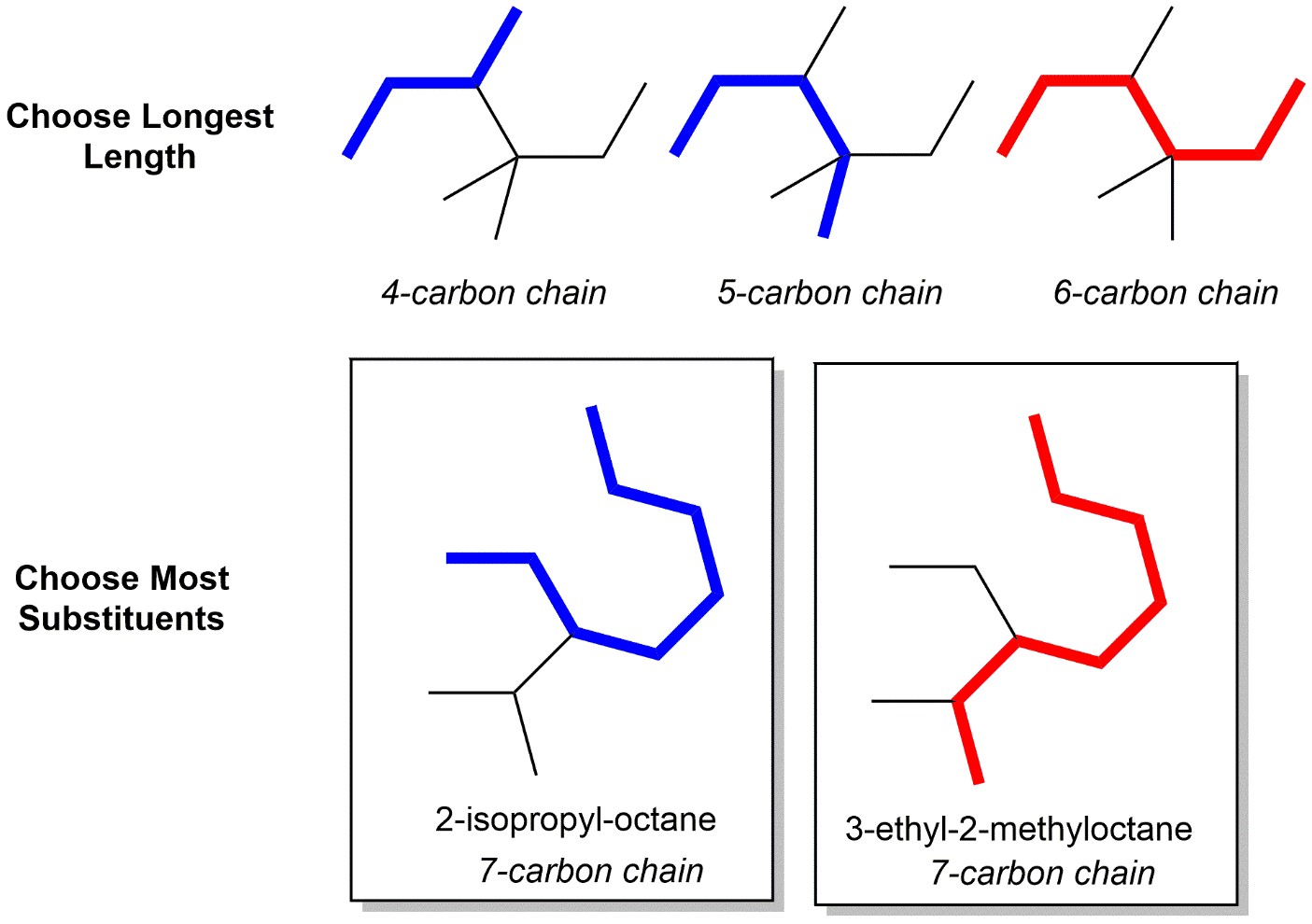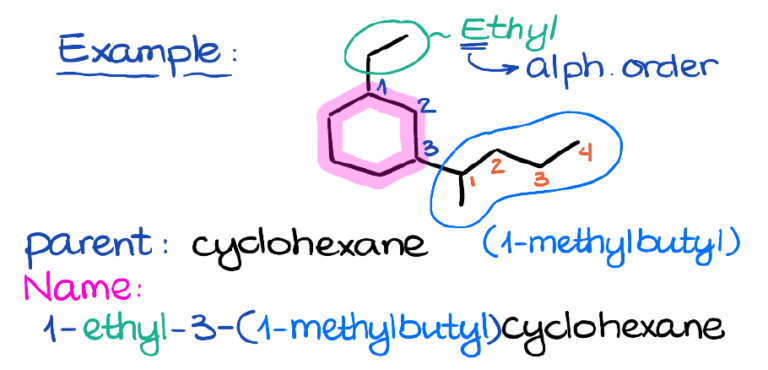
"Carbonate" becomes either "Hydrogen Carbonate" or "Bicarbonate" Polyatomic anions (a negatively charged ion containing more than one type of element) often add a hydrogen atom in this case, the anion's name either adds "hydrogen-" or "bi-" to the beginning.One more oxygen than the most common starts with "per-" and ends with "-ate" THE MOST COMMON OXOANION ENDS WITH "-ATE" One less oxygen than the most common ends with "-ite" Two less oxygen than the most common starts with "hypo-" and ends with "-ite" However, ifthere is more than one oxyanion for a specific element then the endings are: Oxoanions (negatively charged polyatomic ions which contain O) end in "-ate".

#NAMING COMPOUNDS ORGANIC CHEMISTRY CALCULATOR PLUS#
Monatomic cations (a single atom with a positive charge) take the name of the element plus the word "ion".Naming Ionic CompoundsThe outline below provides the rules for naming ionic compounds: Other common ions are listed in the table below: halogens (7th column elements) form "-1" ions such as Cl - and I.alkaline earth metals (2nd column elements) form " 2+" ions such as Mg 2+ and Ba 2+.alkalis (1st column elements) form "+1" ions such as Na + and Li +.Knowledge of the charges of ions is crucial to knowing the formulas of the compounds formed.

To cancel these charges, we must have three magnesium atoms for every two nitrogen atoms: For example, when combining magnesium and nitrogen we know that the magnesium ion has a "+2" charge and the nitrogen ion has a "-3" charge. Scientists use subscripts to identify how many of each atom makes up the molecule. In order to create a neutral charged molecule, you must combine the atoms in certain proportions. To make a neutral molecule, the positive charge of the cation (positively-charged ion) must equal the negative charge of the anion (negatively-charged ion). To determine which substance is formed, we must use the charges of the ions involved. They are generally formed when nonmetals and metals bond. Ionic compounds are combinations of positive and negative ions. Knowing the oxidation number of a compound is very important when discussing ionic compounds. The oxidation number of a compound is equal to the sum of the oxidation numbers for each atom in the compound.Cl, Br, and I are always -1 in compounds except when they are combined with O or F.For single atoms in an ion, their oxidation number is equal to their charge.An atom of a pure element has an oxidation number of zero.The oxidation number is assigned according to a standard set of rules. It is often referred to as the "charge" on the atom or compound. Oxidation numbers are assigned to atoms and compounds as a way to tell scientists where the electrons are in a reaction. Just remember, " LEO the lion says GER:" Lose Electrons Oxidation, Gain Electrons Reduction. Oxidation/Reduction reactions are the processes of losing and gaining electrons respectively. One of the most important manners in which atoms and/or molecules react with each other is the oxidation/reduction reaction. Oxidation and ReductionWhen forming compounds, it is important to know something about the way atoms will react with each other.

This section is designed to help you review some of those rules and conventions. Chemists use specific rules and "conventions" to name different compounds.


 0 kommentar(er)
0 kommentar(er)
